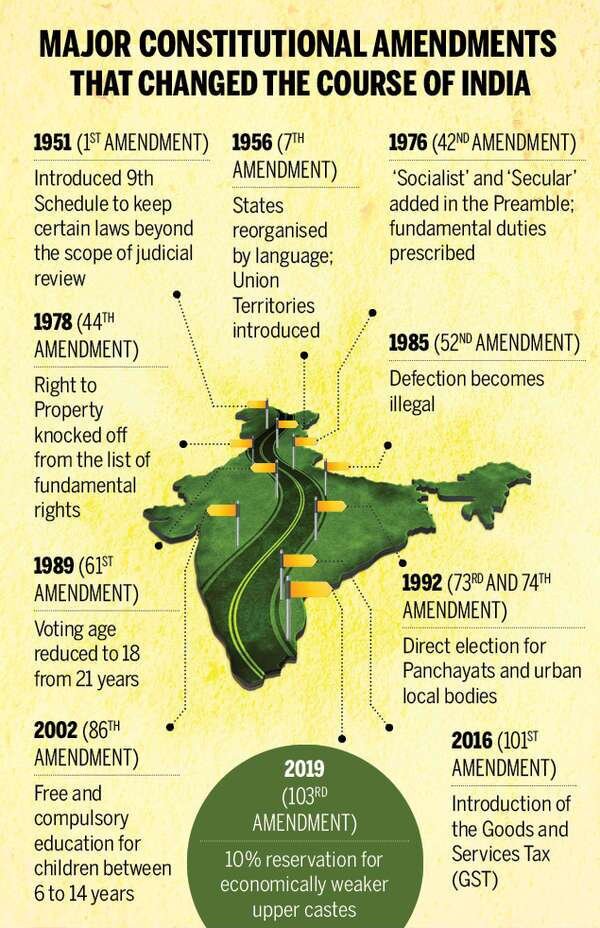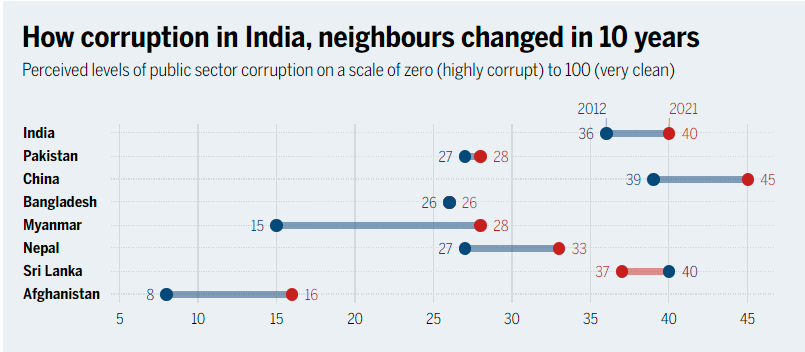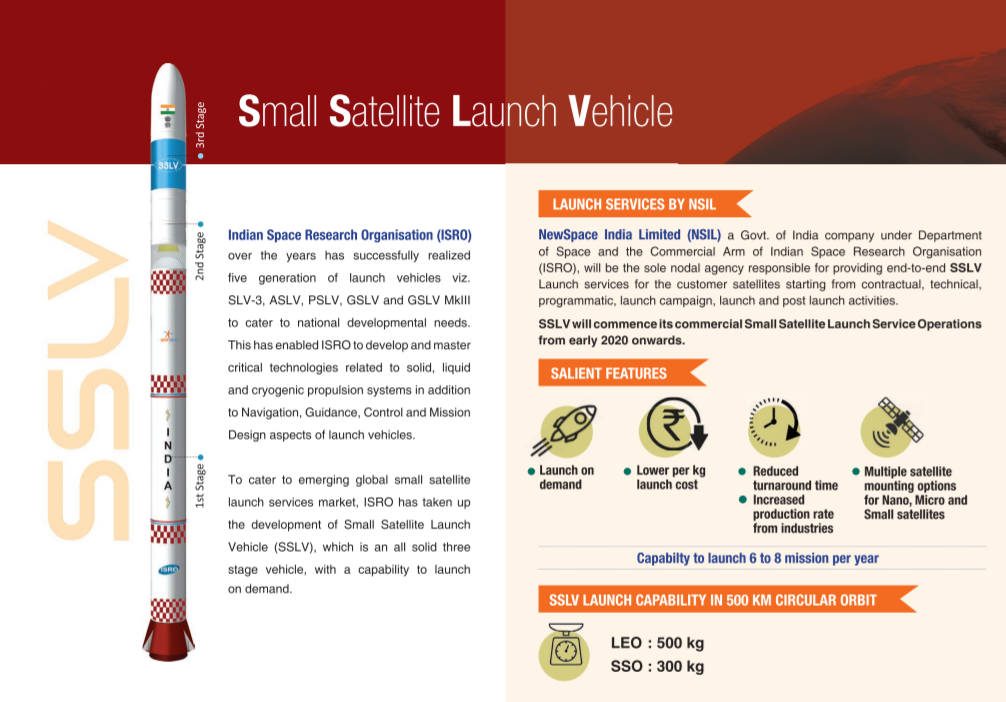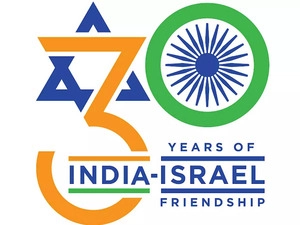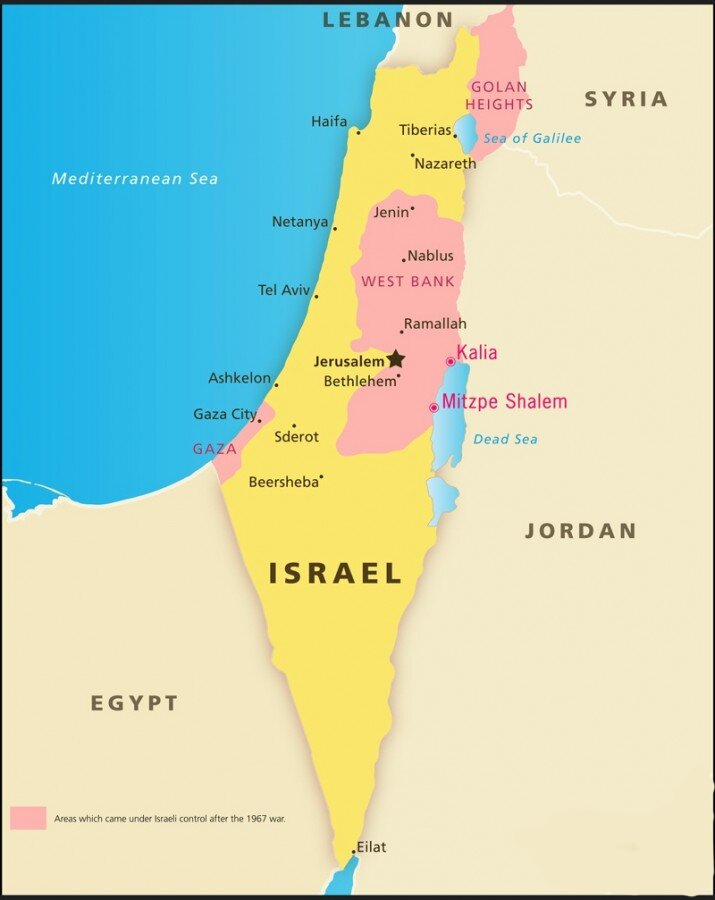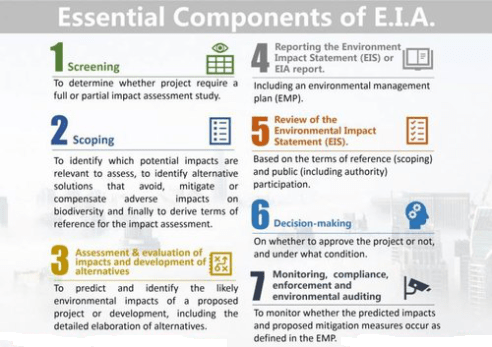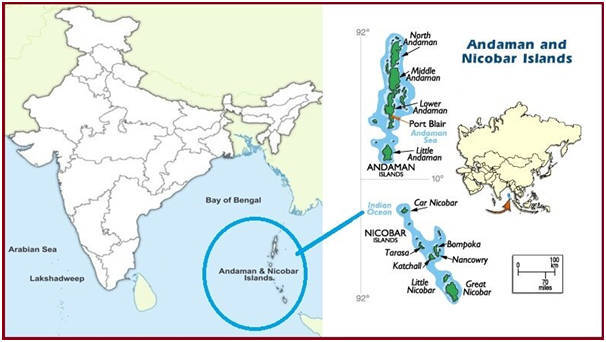Indian Polity
Republic Day 2022
For Prelims: Features of Indian Constitution and the related background.
For Mains: Significance of Republic day and threats to Indian Democracy.
Why in News
Republic Day (73rd) is celebrated every year on 26th January to commemorate the adoption of the Indian Constitution, which came into effect on this day in 1950.
- The Constitution is the supreme law of the land and citizens are expected to abide by it.
Key Points
- Background:
- India became an independent nation on 15th August, 1947 — a date thrust upon by Lord Louis Mountbatten, as it marked the second anniversary of Japan’s submission to allied powers after World War II.
- After India became independent, it did not have its own constitution. The laws were based on a common law system and a modified version of the “Government of India Act, 1935”, which was brought in by the British government.
- Approximately two weeks later, a Drafting Committee was appointed to draft the Indian Constitution with Dr BR Ambedkar as the chairman. The Indian Constitution was finally ready and adopted on 26th November, 1949 (Constitution Day).
- The Constitution came into effect after two months, on 26th January, 1950.
- The Indian National Congress, on 19th December, 1929, passed a historic resolution of “Purna Swaraj” or complete self-rule at its Lahore session.
- It was declared by the Congress party that 26th January, 1930, will be celebrated as “Independence Day” by the Indians.
- Pandit Jawaharlal Nehru, who was the President of Congress party, hoisted the tricolor on the banks of the Ravi river in Lahore. This day was celebrated as Poorna Swaraj day for the next 17 years.
- Thus, when the Constitution of India was adopted on 26th November, 1949, many considered it necessary to celebrate and enforce the document on a day associated with national pride, which was – 26th January.
- Significance:
- Republic day is a monumental day in Indian history because it was on this day that India adopted its own Constitution and declared its own laws of the land.
- The British colonial Government of India Act (1935) was finally replaced and the country was set to make a fresh start.
- Additionally, it was also on this day that the Preamble of the Constitution of India came into effect.
- The Preamble is largely a comprehensive statement that presents the key principles of the Constitution.
- On this day India shed the last relic of the colonial system and effected a new dawn by becoming a Sovereign Democratic Republic.
- The day is an occasion to commemorate the values of our democracy and Republic, to reaffirm our commitment to liberty, fraternity and equality across our society and among all our citizens.
- The day celebrates the desire of a huge nation that wants to be governed through one single constitution giving another example of India’s unity in diversity.
- Threats to Indian Democracy:
- Although India has made a place for itself as one of the fastest growing economies in the world, it loses behind a lot in the name of growth.
- Poverty remains the biggest challenge of present day India, the majority of the people continue to live below the poverty line with a huge divide between the rich and the poor.
- Gender discrimination remains at all level with skewed female ratio, few economic opportunities, disparities in wages, violence, malnutrition etc.
- Communalism and religious fundamentalism have acquired a very dangerous form and alarming proportion in India. It is an affront to India’s nationalist identity and a tragic setback to its evolving secular culture.
- Indian democracy also struggles with regionalism which is primarily an outcome of regional disparities and imbalances in development.
- Continued feeling of inequality both among and within state creates a feeling of neglect, deprivation and discrimination.
- Elections which serve as the most evident expression of democracy are affected by money and muscle abuse by politicians and political parties.
- Most of the politicians have pending criminal cases against them, source of funding for elections remains questionable.
Sovereign, Democratic, Republic
- Sovereign: The word ‘sovereign’ implies that India is neither a dependency nor a dominion of any other nation, but an independent state. There is no authority above it, and it is free to conduct its own affairs.
- Democratic: It is based on the doctrine of popular sovereignty, that is, possession of supreme power by the people.
- Republic: Preamble indicates that India has an elected head called the President. He is elected indirectly for a fixed period of five years.
Way Forward
- Our Republic has come a long way and we must appreciate how far successive generations have brought us. Equally, we must appreciate that our voyage is far from complete.
- There is a need to recalibrate our yardstick of achievement and success - from quantity to quality; from a literate society to a knowledge society in order.
- No conception of India's development can be complete without a salute to our spirit of inclusiveness. India's pluralism is its greatest strength and its greatest example to the world.
- The "Indian model" rests on a tripod of diversity, democracy and development where we cannot choose one above the other.
- The nation needs to encompass all segments and all communities, so that the nation transforms into a family that invokes, encourages and celebrates the uniqueness and potential in each person.
Indian Polity
Election Freebies
For Prelims: Election Symbols (Reservation and Allotment) Order 1968
For Mains: Arguments in Favor of Freebies, Impact of freebies on economy.
Why in News
Recently, a petition has been filed in the Supreme Court seeking a direction to the Election Commission of India (ECI) to seize the election symbol or deregister a political party that promises or distributes “irrational freebies” from public funds before elections.
- The petition argued that the recent trend of political parties to influence voters by offering freebies with an eye on elections is not only the greatest threat to the survival of democratic values but also injures the spirit of the Constitution.
Key Points
- About Freebies in Indian Politics:
- Political parties promise to offer free electricity/water supply, monthly allowance to unemployed, daily wage workers and women as well as gadgets like laptops, smartphones etc. in order to secure the vote of the people.
- About the Petition:
- Petitioner submits that arbitrary promises of irrational freebies violate the ECI's mandate for free and fair elections.
- Distributing private goods-services, which are not for public purposes, from public funds clearly violates Articles 14 (equality before law), 162 (executive power of a State), 266(3) (expenditure from Consolidated Fund of India) and 282 (Discretionary grants)of the Constitution.
- The petition also sought the Supreme Court to give a direction to the Union to enact a law in this regard.
- It sought a direction to the ECI to insert an additional condition in the relevant paragraphs of the Election Symbols (Reservation and Allotment) Order 1968.
- It deals with conditions for recognition as a state party, that a "political party shall not promise/distribute irrational freebies from the public fund before the election".
- Arguments in Favor of Freebies:
- Essential for Fulfilling Expectations: In a country like India where the states have (or don’t have) a certain level of development, upon the emergence of the elections, there are expectations from the part of people which are met by such promises of freebies.
- Moreover, there are also comparative expectations when the people of the adjoining/other states (with different ruling parties) get freebies.
- Helps Lesser Developed States: With the states that have comparatively lower level of development with a larger share of the population suffering from poverty, such kind of freebies become need/demand-based and it becomes essential to offer the people such subsidies for their own upliftment.
- Essential for Fulfilling Expectations: In a country like India where the states have (or don’t have) a certain level of development, upon the emergence of the elections, there are expectations from the part of people which are met by such promises of freebies.
- Associated Issues With ‘Freebies’:
- Economic Burden: This places a huge economic burden on the exchequer of the state as well as centre.
- Against Free and Fair Election: The promise of irrational freebies from public funds before elections unduly influences the voters, disturbs the level playing field and vitiates the purity of the poll process.
- It amounts to an unethical practice that is just like giving bribes to the electorate.
- Against Equality Principle: Distribution of private goods or services, which are not for public purposes, from public funds before the election violates several articles of the Constitution, including Article 14 (equality before law).
- SC Judgement: The Supreme Court in S Subramaniam Balaji vs Government of Tamil Nadu 2013 case held that unrealistic poll promises and freebies are a serious issue that disturbs the level-playing field in elections.
- The court also held that promises in the election manifesto cannot be construed as “corrupt practice“ under the Representation of People Act or under any other prevailing law and hence, distribution of freebies can’t be stopped when the ruling party uses public funds for this purpose through passage of Appropriation Acts in state assembly.
- At the same time, the court noted that there is no enactment that directly governs the contents of the election manifesto, and directed ECI to frame guidelines for the same in consultation with all the recognised political parties.
Way Forward
- Better Policy Reach: The economic policies or development models that the parties plan to adopt have to be very clearly stated and implemented effectively.
- Moreover, the parties should have (and provide) a proper understanding on the economics and expenditure of such policies.
- Judicious Demand-Based Freebies: India is a large country and there is still a huge set of people who are below the poverty line.
- It is also important to have all the people accommodated in the development plan of the country.
- The judicious and sensible offering of freebies or subsidies that can be easily accommodated in the states’ budget do not do much harm and can be leveraged.
- Differentiating Subsidies and Freebies: There is a need to understand the impacts of freebies from the economic sense and connect it with the taxpayers money.
- It is also essential to distinguish between subsidy and freebies as subsidies are the justified and specifically targeted benefits that arise out of demands.
- Awareness Among People: The People should realize the wrong they do in selling their votes for freebies. If they do not resist, they cannot expect good leaders.


Governance
Corruption Perception Index 2021
For Prelims: Corruption Perception Index, Transparency International, Democracy, Corruption, Jakarta Statement.
For mains: Transparency & Accountability, Important International Institutions, Common causes of Corruption and a Way Forward.
Why in News
Recently, the Corruption Perception Index (CPI) 2021 was released by Transparency International.
- Overall, the CPI shows that control of corruption has stagnated or worsened in 86% of countries over the last decade.
Transparency International
- It is an international non -governmental organisation founded in 1993 based in Berlin, Germany
- Its non-profit purpose is to take action to combat global Corruption with civil societal anti-corruption measures and to prevent criminal activities arising from corruption.
- Its most notable publications include the Global Corruption Barometer and the Corruption Perception Index.
Key Points
- About:
- The Index ranks 180 countries and territories by their perceived levels of public sector corruption according to experts and businesspeople.
- It relies on 13 independent data sources and uses a scale of zero to 100, where zero is highly corrupt and 100 is very clean.
- More than two-thirds of countries (68%) score below 50 and the average global score remains static at 43. Since 2012, 25 countries significantly improved their scores, but in the same period 23 countries significantly declined.
- Top performers:
- This year, the top countries are Denmark, Finland and New Zealand, each with a score of 88. Norway (85), Singapore (85), Sweden (85), Switzerland (84), the Netherlands (82), Luxembourg (81) and Germany (80) complete the top 10.
- Bottom Performers:
- South Sudan (11), Syria (13) and Somalia (13) remain at the bottom of the index.
- Countries experiencing armed conflict or authoritarianism tend to earn the lowest scores, including Venezuela (14), Afghanistan (16), North Korea (16), Yemen (16), Equatorial Guinea (17), Libya (17) and Turkmenistan (19).
- India’s Performance:
- India ranked 85 among 180 countries in the current index (86 in 2020 and 80 in 2019). Transparency International gave India a CPI score of 40.
- Except Bhutan, all of India's neighbours are ranked below it. Pakistan dropped 16 spots in the index and was ranked at 140.
- The country’s score has remained stagnant over the past decade, some of the mechanisms that could help reign in corruption are weakening.
- There are concerns over the country’s democratic status, as fundamental freedoms and institutional checks and balances decay.
- Anyone that speaks up against the government has been targeted with security, defamation, sedition, hate speech and contempt-of-court charges, and with regulations on foreign funding.
- India ranked 85 among 180 countries in the current index (86 in 2020 and 80 in 2019). Transparency International gave India a CPI score of 40.
- Fall of Democracy:
- From the repression of opposition supporters in Belarus, to the closing of media outlets and civil society organisations in Nicaragua, the deadly violence against protesters in Sudan and the killing of human rights defenders in the Philippines, human rights and democracy are under threat around the world.
- Increasingly, rights and checks and balances are being undermined not only in countries with systemic corruption and weak institutions, but also among established democracies.
- Since 2012, 90% of countries have stagnated or declined in their civil liberties score on the Democracy Index.
- The global Covid-19 pandemic has also been used in many countries as an excuse to curtail basic freedoms and side-step important checks and balances.
- And despite the increasing international momentum to end the abuse of anonymous shell companies, many high-scoring countries with relatively “clean” public sectors continue to enable transnational corruption.
- The current wave of authoritarianism is not driven by coups and violence, but by gradual efforts to undermine democracy. This usually begins with attacks on civil and political rights, efforts to undermine the autonomy of oversight and election bodies, and control of the media.
- Such attacks allow corrupt regimes to evade accountability and criticism, allowing corruption to flourish.
- Suggestions:
- Peoples Demand:
- To end the vicious cycle of corruption, human rights violations and democratic decline, people should demand that their governments:
- Uphold the rights needed to hold power to account.
- Restore and strengthen institutional checks on power.
- Combat transnational forms of corruption.
- Uphold the right to information in government spending.
- To end the vicious cycle of corruption, human rights violations and democratic decline, people should demand that their governments:
- Address Fundamental Failings:
- To forge ahead together in sustainable anti-corruption efforts, economic recovery strategies should address the fundamental failings that have led to many countries’ corrupt systems.
- Effective control of corruption and common prosperity can only be achieved through the engagement of informed people who are able to assemble freely, speak openly and blow the whistle on corruption without fear of reprisal.
- Anti- Corruption Agencies:
- Countries with no anti-corruption agency or weakening institutions should uphold the 2012 Jakarta Statement on Principles for Anti-Corruption Agencies, its Colombo Commentary and regional commitments such as the Teieniwa Vision, alongside all other steps required by the United Nations Convention against Corruption.
- The United Nations Convention against Corruption is the only legally binding universal anti-corruption instrument.
- Countries with no anti-corruption agency or weakening institutions should uphold the 2012 Jakarta Statement on Principles for Anti-Corruption Agencies, its Colombo Commentary and regional commitments such as the Teieniwa Vision, alongside all other steps required by the United Nations Convention against Corruption.
- Peoples Demand:
Related Indian Initiatives


Governance
Integrity Pact
For Prelims: Central Vigilance Commission (CVC), ‘Integrity Pact’, Prevention of Corruption Act, 1988.
For Mains: Measures Taken to Tackle Corruption.
Why in News
Recently, the Central Vigilance Commission (CVC) has modified the criteria for the nomination of Independent External Monitors (IEM) in government bodies.
- The modification came months after it had issued a revised standard operating procedure for adoption and implementation of the ‘Integrity Pact’ clause, which is meant to prevent corruption in public procurement.
Key Points
- Integrity Pact:
- The ‘Integrity Pact’ envisages an agreement between the prospective vendors/bidders and the buyer, committing persons and officials of both sides to not resort to any corrupt practices in any aspect or stage of the contract.
- Any violation of the clause entails the disqualification of bidders and exclusion from future business dealings.
- The pact also ensures transparency, equity and competitiveness in public procurement.
- Independent External Monitors:
- The IEMs independently and objectively review the documents to determine if the parties have complied with their obligations under the pact.
- They give recommendations to the authorities concerned after examining the complaints related to any contract.
- They may submit a report to the chief executive of the organisation concerned or directly to the Chief Vigilance Officer (CVO) and the CVC, if they find serious irregularities attracting the Prevention of Corruption Act, 1988 provisions.
- IEM Rules Modificiation: The zone of consideration for empanelment as IEMs has been revised. It now includes:
- Officers who have held the post of Additional Secretary to the Government of India;
- Those who were Chairman-cum-Managing Directors (CMD) of Schedule ‘A’ public sector enterprises.
- Persons equivalent/higher to Additional Secretary to the Central government at the time of retirement.
- CMDs/MDs and Chief Executive Officers (CEOs) of public sector banks, insurance companies and other financial institutions at the time of retirement;
- Officers of the armed forces who were in a pay scale equivalent to or higher than that of Additional Secretary at the time of retirement, are also eligible.
Central Vigilance Commission
- CVC is the apex vigilance institution, free of control from any executive authority, monitoring all vigilance activity under the Central Government and advising various authorities in Central Government organizations in planning, executing, reviewing and reforming their vigilance work.
- It is an independent body and is only responsible to the Parliament.
- It was set up by the Government in February, 1964 on the recommendations of the Committee on Prevention of Corruption, headed by K. Santhanam.
- The Parliament enacted Central Vigilance Commission Act, 2003 (CVC Act) conferring statutory status on the CVC.


Science & Technology
Small Satellite Launch Vehicle
For Prelims: Types of Launch Vehicles, Types of Orbits.
For Mains: Significance of small launch vehicles in India’s space sector.
Why in News
Recently, the Indian Space Research Organisation (ISRO) chairman has mentioned the launch of an “SSLV-D1 Micro SAT in April 2022”.
- The SSLV (Small Satellite Launch Vehicle) aims to cater to the market for the launch of small satellites into Earth’s low orbits that has emerged in recent years to cater to the needs of developing countries, universities for small satellites, and private corporations.
Key Points
- About:
- It is the smallest vehicle weighing only 110-tonne. It will take only 72 hours to integrate, unlike the 70 days taken now for a launch vehicle.
- It can carry satellites weighing up to 500 kg to a low earth orbit while the tried and tested Polar Satellite Launch Vehicle (PSLV) can launch satellites weighing in the range of 1000 kg.
- SSLV is a three-stage all solid vehicle and has a capability to launch up to 500 kg satellite mass into 500 km Low Earth Orbit (LEO) and 300 kg to Sun Synchronous Orbit (SSO).
- It is perfectly suited for launching multiple microsatellites at a time and supports multiple orbital drop-offs.
- The key features of SSLV are low cost, with low turn-around time, flexibility in accommodating multiple satellites, launch on demand feasibility, minimal launch infrastructure requirements, etc.
- The Government has sanctioned a total cost of Rs. 169 Crores for the development project including the development & qualification of the vehicle systems and the flight demonstration through three development flights (SSLV-D1, SSLV-D2 & SSLV-D3).
- ISRO’s new chairman Dr Somanath is credited with designing and developing the SSLV during his tenure as director of the Vikram Sarabhai Space Centre in Thiruvananthapuram since 2018.
- The maiden flight of the SSLV was scheduled to launch in July 2019 but that has since been delayed due to setbacks from Covid-19 and other issues.
- Significance of SSLV:
- The development and manufacture of the SSLV are expected to create greater synergy between the space sector and private Indian industries – a key aim of the space ministry.
- Indian industry has a consortium for the production of PSLV and should come together to produce the SSLV as well once it is tested.
- One of the mandates of the newly-created ISRO commercial arm, New Space India Limited (NSIL) is to mass-produce and manufacture the SSLV and the more powerful PSLV in partnership with the private sector in India through technology transfers.
- Its aim is to use research and development carried out by ISRO over the years for commercial purposes through Indian industry partners.
- Small satellite launches have so far depended on ‘piggy-back’ rides with big satellite launches on the Polar Satellite Launch Vehicle (PSLV) — ISRO’s work-horse with more than 50 successful launches. As a result, small satellite launches have relied on ISRO finalising launch contracts for larger satellites.
- The development and manufacture of the SSLV are expected to create greater synergy between the space sector and private Indian industries – a key aim of the space ministry.


International Relations
India and Israel Relations
For Prelims: Location of Israel
For Mains: India and Israel Relations, related issues and way ahead.
Why in News
- To mark the 30th anniversary of the establishment of diplomatic ties between the two countries, India and Israel launched a commemorative logo.
- The logo features the Star of David and the AshokaChakra- the two symbols that adorn the national flags of both countries- and forms the numeral 30 depicting the 30th anniversary of bilateral relations.
Key Points
- Diplomatic Ties:
- Though India officially recognised Israel in 1950, the two countries established full diplomatic ties only on 29th January 1992. As of December 2020, India was among 164 United Nations (UN) member states to have diplomatic ties with Israel.
- Economic and Commercial Relations:
- From USD 200 million in 1992, bilateral merchandise trade stood at USD 4.14 billion (excluding defence) during the period April 2020 – February 2021 with the balance of trade being in India’s favour.
- Trade in diamonds constitutes about 50% of bilateral trade..
- India is Israel's third-largest trade partner in Asia and seventh largest globally.
- Israeli companies have invested in India in energy, renewable energy, telecom, real estate, water technologies, and are focusing on setting up R&D centers or production units in India.
- India is also in dialogue with Israel for concluding a Free Trade Agreement (FTA).
- From USD 200 million in 1992, bilateral merchandise trade stood at USD 4.14 billion (excluding defence) during the period April 2020 – February 2021 with the balance of trade being in India’s favour.
- Defence:
- India is the largest buyer of military equipment from Israel, which, in turn, is the second-largest defence supplier to India, after Russia.
- The Indian armed forces have inducted a wide array of Israeli weapon systems over the years, which range from Phalcon AWACS (Airborne Warning And Control Systems) and Heron, Searcher-II and Harop drones to Barak anti-missile defence systems and Spyder quick-reaction anti-aircraft missile systems.
- The acquisitions also include a host of Israeli missiles and precision-guided munitions, from Python and Derby air-to-air missiles to Crystal Maze and Spice-2000 bombs.
- At the 15th Joint Working Group (JWG 2021) meeting on Bilateral Defence Cooperation, countries agreed to form a Task Force to formulate a comprehensive Ten-Year Roadmap to identify new areas of cooperation.
- Cooperation in Agriculture:
- In May 2021, “a three-year work program agreement” for development in agriculture cooperation, was signed.
- The programme aims to grow existing Centres of Excellence, establish new centers, increase CoE’s value chain, bring the Centres of Excellence into the self-sufficient mode, and encourage private sector companies and collaboration.
- Science & Technology:
- Recently, experts from India and Israel deliberated on widening the scope of India-Israel Industrial R&D and Technological Innovation Fund (I4F) at its 8th Governing Body meeting.
- They approved 3 joint R&D projects worth 5.5 million USD and suggested measures to create a broader India-Israel collaborative ecosystem.
- I4F is a cooperation between the two countries to promote, facilitate and support joint industrial R&D projects between companies from India and Israel to address the challenges in the agreed ‘Focus Sectors’.
- Others:
- Israel is also joining the India-led International Solar Alliance (ISA), which aligns very well with the objectives of both countries to scale up their cooperation in renewable energy and partner in clean energy.
Way Forward
- The ties between the two nations have flourished since 1992, primarily due to common strategic interests and security threats.
- Indians are sympathetic towards Israel and the government is balancing and recalibrating its West Asia policy on the premise of its own national interest.
- India and Israel need to overcome the vulnerability of their religious extremist neighbours and work productively on global issues like climate change, water scarcity, population explosion and food scarcity.
- A more aggressive and proactive Middle Eastern policy is the need of the hour for India to reap the maximum benefit of the geopolitical realignments gradually being brought in by the Abraham Accords.
Biodiversity & Environment
Development Project in the Great Nicobar Island: Inaccurate EIA
For Prelims: Great Nicobar Island, Environmental Impact Assessment, Galathea Bay, Giant Leatherback, Migratory birds, Onge tribe, Shompen Tribe, Campbell Bay.
For Mains: Environmental Impact Assessment, Development Project in the Great Nicobar Island and its impact on environment.
Why in News
The recently released draft Environment Impact Assessment (EIA) report for the mega development project in the Great Nicobar Island has raised serious questions related to submission of incorrect or incomplete information, scientific inaccuracy and failure to follow appropriate procedure.
- A committee of the Ministry of Environment Forest and Climate Change (MoEFCC) issued Terms of Reference (ToR) to prepare the EIA report in May 2021.
- Earlier, a plan for the sustainable and holistic development of the 680 sq km, fragile Little Andaman Island in the Andaman and Nicobar group had raised the alarm among conservationists.
Environmental Impact Assessment (EIA)
- It is a process of evaluating the likely environmental impacts of a proposed project or development, taking into account inter-related socio-economic, cultural and human-health impacts, both beneficial and adverse.
- EIA is statutorily backed by the Environment Protection Act, 1986 which contains various provisions on EIA methodology and process.
Key Points
- About:
- NITI Aayog-piloted Rs. 72,000-crore integrated project in Great Nicobar includes construction of a mega port, an airport complex, a township spread over 130 sq. km of pristine forest and a solar and gas-based power plant.
- Andaman and Nicobar Islands Integrated Development Corporation Ltd. (ANIIDCO) is the project proponent.
- Ecologists and researchers have been raising concerns about this project for over a year.
- Issues with the EIA Report:
- Incorrect or Incomplete Information:
- The area of the island is mentioned in one place as 1,045 sq. km, while it is 910 sq. km (the current official figure) in another.
- It was reported that the Galathea port area does not record any coral reefs, whereas the Zoological Survey of India (ZSI) study shows that the coral reef spread over 116 hectares in Galathea Bay.
- Galathea Bay is an iconic nesting site in India of the enigmatic Giant Leatherback, the world’s largest marine turtle—borne out by surveys done over three decades.
- 330 species of fauna are recorded in the island, while the same ZSI study puts the number at more than double at 695.
- The EIA says in another place no migratory birds have been reported from Great Nicobar, whereas it is well known that these islands are located along two globally significant bird flyways and more than 40 species of migratory birds have been recorded from Great Nicobar.
- Institutional Callousness:
- The EIA report was expected to have details of the project proponent’s (ANDICO) environmental policy such as its standard operating process, procedures for highlighting violation of environmental and forest norms and for ensuring compliance with environmental clearance conditions.
- The undertaking, issued by the Directorate of Tribal Welfare, the agency tasked with the primary job of securing the rights of the indigenous people on the islands.
- It first assures that “the right of the tribal shall be well protected and taken care of” and,
- Then goes on to conclude that “whenever any exemption from the existing regulations/policies/law of the land are required to be provided for the execution of the project, this Directorate will seek required exemptions(s) from the competent authority to that effect”.
- Incorrect or Incomplete Information:
- Issues Raised by Environmentalists:
- This project is likely to impact turtle and megapode nesting sites and coral reefs at the islands.
- Many reserved areas are expected to be de-notified for the project including land under Great Nicobar Biosphere Reserve and a tribal reserve.
- Close to 81.74% of the island is covered with national parks, reserves and forests.
- The project will have a direct impact on the biodiversity and cascading effects on the indigenous Onge tribe.
- The Onge are one of the tribes of India's Andaman Islands.
Great Nicobar
- About:
- Great Nicobar is the southernmost island of the Nicobar Islands Archipelago.
- It covers 1,03,870 hectares of unique and threatened tropical evergreen forest ecosystems.
- It is home to a very rich ecosystem, including 650 species of angiosperms, ferns, gymnosperms, bryophytes, among others.
- In terms of fauna, there are over 1800 species, some of which are endemic to this area.
- Ecological Characteristics:
- The Great Nicobar Biosphere Reserve harbours a wide spectrum of ecosystems comprising tropical wet evergreen forests, mountain ranges reaching a height of 642 m (Mt. Thullier) above sea level, and coastal plains.
- Tribe:
- The Mongoloid Shompen Tribe, about 200 in number, live in the forests of the biosphere reserve particularly along the rivers and streams.
- Another Mongoloid Tribe, Nicobarese, about 300 in number, used to live in settlements along the west coast.
- After the tsunami in 2004, which devastated their settlement on the western coast, they were relocated to Afra Bay in the North Coast and Campbell Bay.


Important Facts For Prelims
The America COMPETES Act
Why in News
The United States has unveiled the ambitious America Creating Opportunities for Manufacturing, Pre-Eminence in Technology, and Economic Strength (COMPETES) Act, 2022, which proposes to open up new vistas for talented individuals from across the world with a new start-up visa.
- It aims to make the supply chains stronger and reinvigorate the innovation engine of the country's economy to outcompete China and the rest of the world for decades to come.
Key Points
- Provisions:
- USD 52 billion to encourage semiconductor production in the US and USD 45 billion for grants and loans to improve supply chain resilience and manufacturing, among other programs.
- Funding to address social and economic inequality, climate change and immigration. For example, it offers an exemption for STEM (science, technology, engineering or mathematics) PhDs from the green card limit and creates a new green card for entrepreneurs.
- A Green Card holder (permanent resident) is someone who has been granted authorization to live and work in the United States on a permanent basis.
- The bill issues USD 600 million a year to build manufacturing facilities to make the United States less dependent on solar components manufactured in Xinjiang, China.
- It creates a new “W” classification of non-immigrants for entrepreneurs with an ownership interest in a start-up entity, essential employees of a start-up entity, and their spouses and children.
- Significance:
- It would mean more opportunities in the US for Indian talent and skilled workers.
- Every year, Indians and Indian companies corner the lion’s share of H-1B work permits issued that year. With this new category, Indian professionals will likely have a better shot at opportunities that the Act is likely to provide.
Work Visas
- About:
- The IT revolution, arrival of internet and low-cost computers in developing nations like India has given rise to the number of people who are willing to work at relatively low costs in the US which is a win-win situation for both the employer and the employee.
- The US administration issues a certain number of visas each year to fill a vacuum of highly-skilled low-cost employees in IT and other related domains.
- These visas allow companies from outside the US to send employees to work on client sites.
- Some Examples from US:
- H-1B Visa:
- These are issued to skilled workers and are the most popular among Indian IT companies.
- H-1B is for people in Specialty Occupation and requires a higher education degree or its equivalent.
- H-2B Visa:
- These are issued to seasonal workers in the landscaping and hospitality industries.
- L-1 Visa:
- It allows companies to transfer highly skilled workers to the US for a period of up to seven years.
- H-4 Visas:
- It is for dependents of H-1B visa holders.
- J-1 Visas:
- It is for students on work-study summer programmes.
- H-1B Visa:



